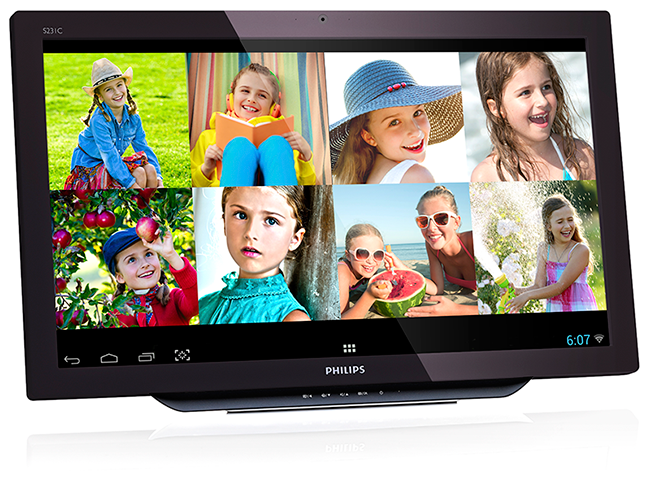Android as a desktop OS
As a concept, Android-powered desktops are full of intrigue and possibility. Google's lightweight mobile operating system has a small footprint, runs on low-cost, low-power hardware, and is cheap for manufacturers to license and implement.
For consumers, Android also acts as an ideal entry point for any end user looking to get connected to the world wide web. There's a very small learning curve, at least compared to a traditional PC, and give a system such as the Philips All-in-One to a novice user and he/she could be up browsing the web, sending emails and checking social networks in next to no time. Touch interaction certainly helps from an ease-of-use perspective, as does the fact that the All-in-One turns on instantly: there's rarely any waiting around.
That's the idea, and there's a pretty clear target audience: such a system would be ideal for my mother-in-law, who's forever struggling with her ageing Windows XP PC. However, there are issues that prevent the Android All-in-One from being a perfect alternative.
While it's easy to deploy Google's operating system on devices of any size, it remains optimised for smaller form factors such as tablets and smartphones. As a consequence, it doesn't scale particularly well on a 23in display, and the user interface is left looking sparse and, in some cases, visibly pixelated.
We like the fact that Philips has refrained from overloading the OS with custom apps - it's essentially a clean copy of Android 4.2 Jelly Bean - but finding apps that work well on this form factor isn't always straightforward. We've run into apps that only run in portrait (they display sideways), others that demand a Wi-Fi connection to run (even when Ethernet is attached), quite a few that lose a significant amount of visual fidelity when blown-up to this screen size, and of course there are some that rely on features available to smaller devices: you can't tilt the Smart All-in-One, and thumb-specific button placement is no help here.
Portability should be a plus point - this might have been the web-connected device for any room in the home or office - but that potential has been stifled by the lack of a built-in battery. Wherever you choose to setup the All-in-One, you'll need to remember to keep the external power brick in tow. None of these niggling issues should be considered deal breakers, yet there are enough of them to suggest that the Android desktop is a work in progress.
There's obvious room for improvement, but we can envisage certain usage scenarios in which the Philips All-in-One would make sense. It's the ideal device for, say, an office reception or hotel lobby, but casual web users may be better served by the flexibility of a smaller Android tablet.
We're anticipating an influx of 'Smart' all-in-one PCs later in the year, and though they're evidently rough around the edges, the concept is full of promise. Give us a flush touchscreen, a built-in battery and desktop-optimised software such as Chrome OS or Windows RT, and we'd be very interested. Question is, can anybody do that and keep pricing at or below the £350 mark?
The Good
Accessible to casual users
Sturdy, tilt-adjustable stand
Very little cable clutter
No bloatware
The Bad
Android not optimised for desktop
Some apps render poorly
at this size
Big bezel hampers certain gestures
HEXUS.where2buy
The Philips Smart All-in-One Monitor is available to purchase from Dabs.
HEXUS.right2reply
At HEXUS, we invite the companies whose products we test to comment on our articles. If any company representatives for the products reviewed choose to respond, we'll publish their commentary here verbatim.















